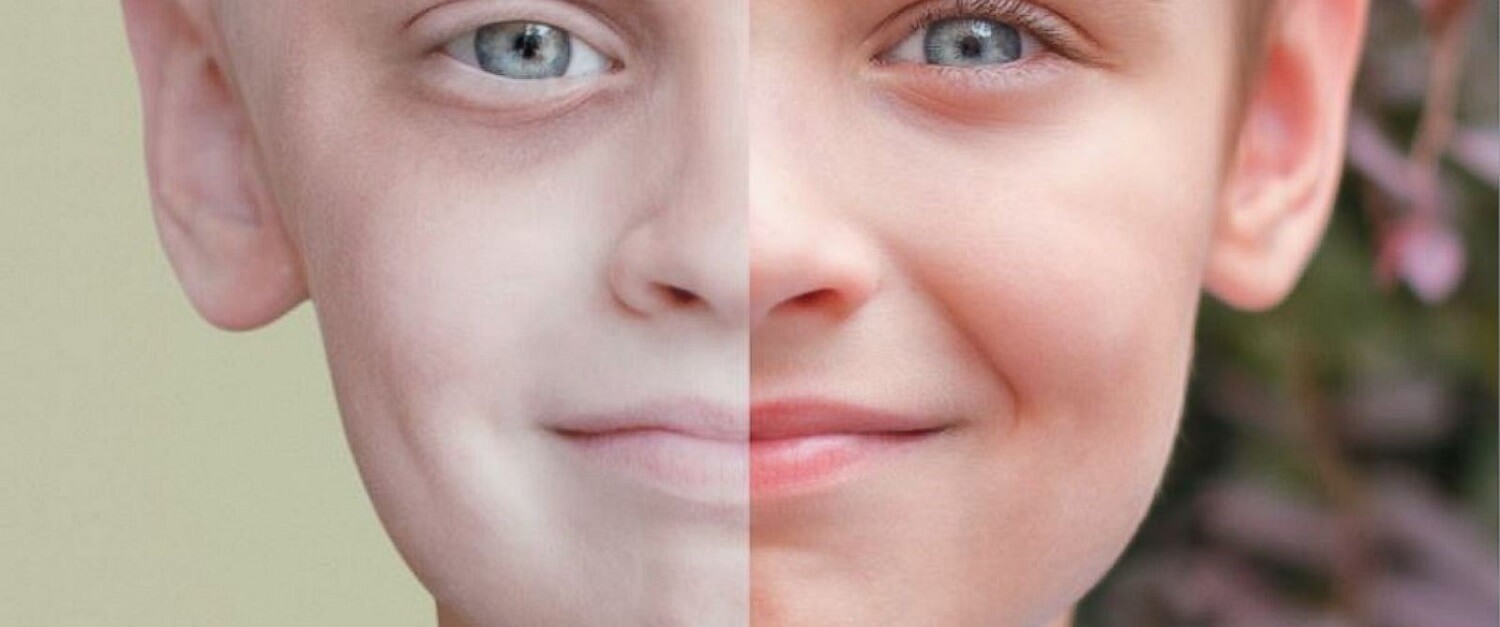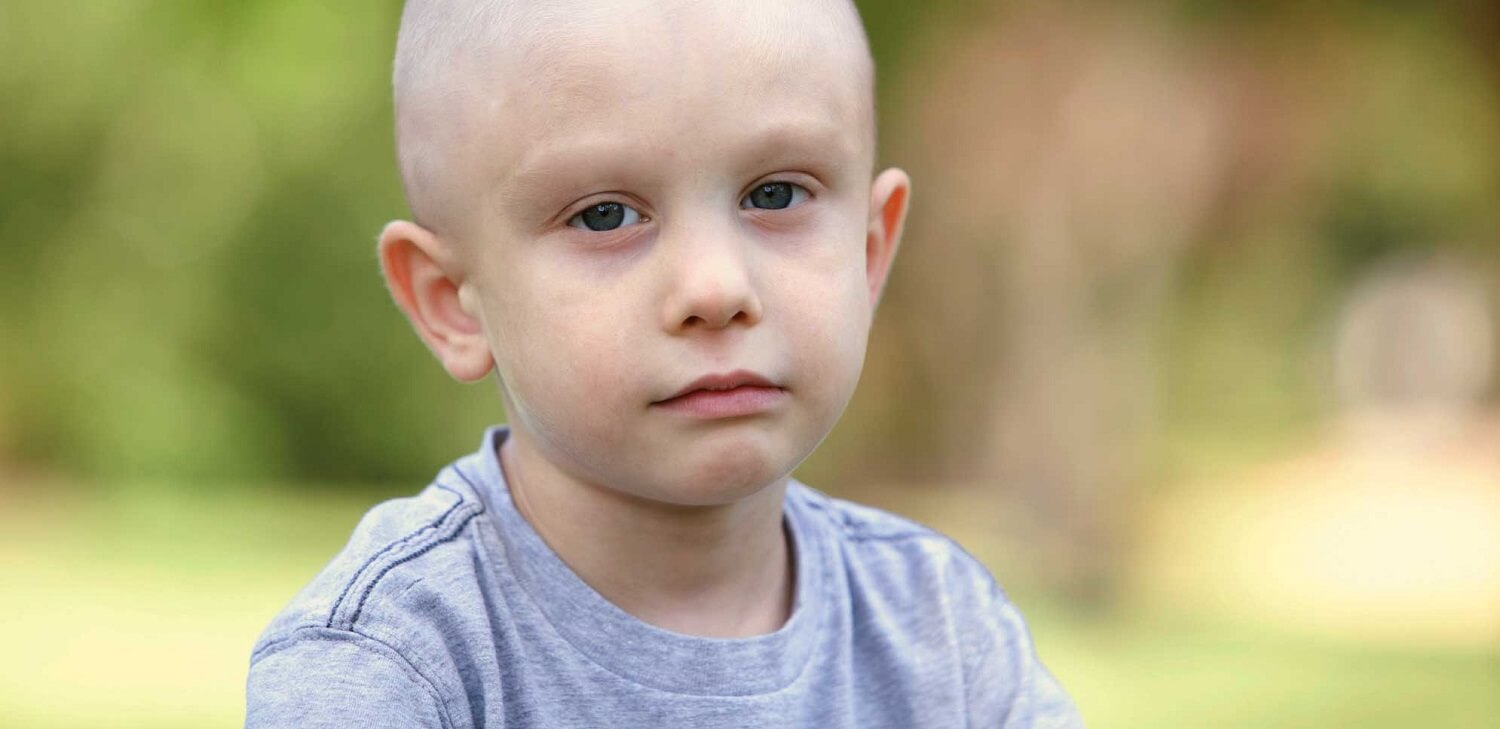12 Signs of Childhood Leukemia

Unfortunately, leukemia is present in the lives of many children today. It is a type of cancer that is most commonly found in young children and is therefore known as childhood leukemia.
Although this is a very serious disease, there is treatment available and therefore it isn’t always fatal. Around 2,000 to 3,000 children, mostly 3 to 5 years old, are diagnosed with childhood leukemia per country.
Childhood leukemia affects the formation of white blood cells in bone marrow. These abnormal cells move through the bloodstream that surrounds healthy cells.
As a result, the body’s ability to fight off viruses decreases, which increases the chances of the child contracting multiple infections and other diseases.
Signs of childhood leukemia
It’s difficult to diagnose leukemia because its symptoms tend to appear slowly (except in acute leukemia, where symptoms appear very suddenly). The symptoms can also be confused with those of other normal childhood diseases.
The signs of childhood leukemia differ from child to child, so it can be difficult to identify it.

You can be a victim of cancer or a survivor of cancer. It’s a mindset.
-Dave Pelzer-
Leukemia cells clump around healthy cells that produce platelets, white blood cells and red blood cells, and these begin to run short in the body. On the other hand, leukemia cells spread to other regions of the body, affecting health.
However, the same symptoms can be caused by other diseases, so it’s important to inform the doctor of these signs quickly in order to treat the disease as soon as possible.

- Fatigue. The child begins to tire quickly because of the anemia that is caused by the shortage of red blood cells. This scarcity can also lead to weakness and pale skin.
- Fevers and infection. The child may suffer fevers that might not be cured with regular medicine.
- Bruising and excessive bleeding. Because leukemia reduces the blood platelets in the body, the child can have a lot of small red spots or bruises all over the skin caused by bleeding from damaged blood vessels. The child may often have nosebleeds and bleeding gums.
- Pain in the bones and joints. Leukemia cells are usually grouped around a joint and around the surface of bones. Therefore, a child with leukemia can commonly complain of pain in the joints and bones.
- Swollen belly. A child with leukemia can also have an enlarged or swollen abdomen or belly. It is actually the liver and spleen where the swelling takes place, caused by the leukemia cells that clump together in the liver.
- Weight loss and appetite loss. A child with leukemia can lose hunger and gradually lose a lot of weight due to the enlargement of the liver and spleen. The enlarged area can press on other organs around it, including the stomach, thus limiting its capacity for food.
- Swollen lymph nodes. The lymph nodes often swell when they fight an infection in young children, and their swelling is often a sign of infection. In leukemia, the lymph nodes also enlarge and the swelling appears as lumps under the skin.
- Respiratory problems and cough. A child with leukemia can suffer from breathing problems and coughing.
- Swelling of the arms and face. The swelling of the arms and face in a child is a very dangerous signal because it can be deadly and needs immediate treatment.
- Convulsions, headaches and vomiting. These are signs of advanced leukemia, along with blurred vision. This shows that leukemia has already spread to the central nervous system.
- Hemorrhage of the gums, and rashes. When the leukemia spreads through the skin, it causes a large number of small spots similar to rashes.
- Extreme weakness. When the amount of leukemia cells in the body reaches a high number, blood flow slows down around the small blood vessels in the brain because the leukemia cells thicken the blood, and this leads to extreme fatigue and weakness.
Unfortunately, leukemia is present in the lives of many children today. It is a type of cancer that is most commonly found in young children and is therefore known as childhood leukemia.
Although this is a very serious disease, there is treatment available and therefore it isn’t always fatal. Around 2,000 to 3,000 children, mostly 3 to 5 years old, are diagnosed with childhood leukemia per country.
Childhood leukemia affects the formation of white blood cells in bone marrow. These abnormal cells move through the bloodstream that surrounds healthy cells.
As a result, the body’s ability to fight off viruses decreases, which increases the chances of the child contracting multiple infections and other diseases.
Signs of childhood leukemia
It’s difficult to diagnose leukemia because its symptoms tend to appear slowly (except in acute leukemia, where symptoms appear very suddenly). The symptoms can also be confused with those of other normal childhood diseases.
The signs of childhood leukemia differ from child to child, so it can be difficult to identify it.

You can be a victim of cancer or a survivor of cancer. It’s a mindset.
-Dave Pelzer-
Leukemia cells clump around healthy cells that produce platelets, white blood cells and red blood cells, and these begin to run short in the body. On the other hand, leukemia cells spread to other regions of the body, affecting health.
However, the same symptoms can be caused by other diseases, so it’s important to inform the doctor of these signs quickly in order to treat the disease as soon as possible.

- Fatigue. The child begins to tire quickly because of the anemia that is caused by the shortage of red blood cells. This scarcity can also lead to weakness and pale skin.
- Fevers and infection. The child may suffer fevers that might not be cured with regular medicine.
- Bruising and excessive bleeding. Because leukemia reduces the blood platelets in the body, the child can have a lot of small red spots or bruises all over the skin caused by bleeding from damaged blood vessels. The child may often have nosebleeds and bleeding gums.
- Pain in the bones and joints. Leukemia cells are usually grouped around a joint and around the surface of bones. Therefore, a child with leukemia can commonly complain of pain in the joints and bones.
- Swollen belly. A child with leukemia can also have an enlarged or swollen abdomen or belly. It is actually the liver and spleen where the swelling takes place, caused by the leukemia cells that clump together in the liver.
- Weight loss and appetite loss. A child with leukemia can lose hunger and gradually lose a lot of weight due to the enlargement of the liver and spleen. The enlarged area can press on other organs around it, including the stomach, thus limiting its capacity for food.
- Swollen lymph nodes. The lymph nodes often swell when they fight an infection in young children, and their swelling is often a sign of infection. In leukemia, the lymph nodes also enlarge and the swelling appears as lumps under the skin.
- Respiratory problems and cough. A child with leukemia can suffer from breathing problems and coughing.
- Swelling of the arms and face. The swelling of the arms and face in a child is a very dangerous signal because it can be deadly and needs immediate treatment.
- Convulsions, headaches and vomiting. These are signs of advanced leukemia, along with blurred vision. This shows that leukemia has already spread to the central nervous system.
- Hemorrhage of the gums, and rashes. When the leukemia spreads through the skin, it causes a large number of small spots similar to rashes.
- Extreme weakness. When the amount of leukemia cells in the body reaches a high number, blood flow slows down around the small blood vessels in the brain because the leukemia cells thicken the blood, and this leads to extreme fatigue and weakness.
All cited sources were thoroughly reviewed by our team to ensure their quality, reliability, currency, and validity. The bibliography of this article was considered reliable and of academic or scientific accuracy.
- Acosta-Gualandri, A., Valverde-Muñoz, K. (2011). Lesiones cutáneas asociadas a leucemia Infantil. Presentación de dos casos. Acta Médica Costarricense;53(1). https://www.scielo.sa.cr/scielo.php?script=sci_arttext&pid=S0001-60022011000100008.
- American Cancer Society. (2019). Signos y síntomas de la leucemia en niños. Consultado el 26 de febrero de 2023. https://www.cancer.org/es/cancer/leucemia-en-ninos/deteccion-diagnostico-clasificacion-por-etapas/senales-y-sintomas.html.
- Argollo, P. (2023). Adenopatías en Pediatría. Rev Méd La Paz;5(2):56-62. http://www.scielo.org.bo/scielo.php?script=sci_arttext&pid=S1726-89582007000200009&lng=es.
- Contreras, J, Durán, I. (2018). Fiebre de origen desconocido en niños. Pediatr Integral; XXII(5):229–235. https://www.pediatriaintegral.es/publicacion-2018-07/fiebre-de-origen-desconocido-en-ninos/.
- Davis, M., Zolezzi, P., Zumeldu, N. (2005). Síndrome de vena cava superior: Una emergencia oncológica en niños con linfoma. Revisión de 5 casos. Revista Chilena de Pediatría;76(5). https://revistachilenadepediatria.cl/index.php/rchped/article/view/2180.
- Frías, V., et al. (2016). Diagnóstico precoz de cáncer en Atención Primaria. Pediatría Integral. https://www.pediatriaintegral.es/publicacion-2016-07/diagnostico-precoz-de-cancer-en-atencion-primaria/.
- Gutiérrez, C., Pavón, P. (s.f.). Hepatosplenomegalia. Asociación Española de Pediatría. https://www.aeped.es/sites/default/files/documentos/5-hepatoesplenomegalia.pdf.
- Huerta, G., Pariona, M. (2022). MANIFESTACIONES BUCALES DE LA LEUCEMIA LINFOBLÁSTICA AGUDA EN INFANTES DE 4 A 10 AÑOS DE EDAD. Universidad de Guayaquil. http://portal.amelica.org/ameli/journal/611/6113144009/html/.
- Lassaletta, A. (2012). Leucemia linfoblástica aguda. Pediatr Integral;XVI(6):453-462. https://www.pediatriaintegral.es/wp-content/uploads/2012/xvi06/03/453-462%20Leucemia.pdf.
- Martínez-Cayuelas, E., et al. (2015). Complicaciones neurológicas en población infantil con leucemia. Rev Neurol;60:108-114. https://neurologia.com/articulo/2014350.
- Méndez, A. (2018). El niño con infecciones de repetición. Pediatr Integral 2018;XXII(5):219-228. https://www.pediatriaintegral.es/publicacion-2018-07/el-nino-con-infecciones-de-repeticion/.
- Oliver, C., Guadagna, R., Zunino, J., Guillermo, C., Díaz, L. (2013). Manifestaciones articulares como debut de leucemia aguda linfoblástica. Presentación de tres casos. Revista Médica del Uruguay;29(2). http://www.scielo.edu.uy/scielo.php?script=sci_arttext&pid=S1688-03902013000200007.
- Onostre, R., et al. (2015). Diagnóstico temprano de leucemia aguda en niños y adolescentes. Revista de la Sociedad Boliviana de Pediatría;54(2). http://www.scielo.org.bo/scielo.php?script=sci_arttext&pid=S1024-06752015000200010.
This text is provided for informational purposes only and does not replace consultation with a professional. If in doubt, consult your specialist.








